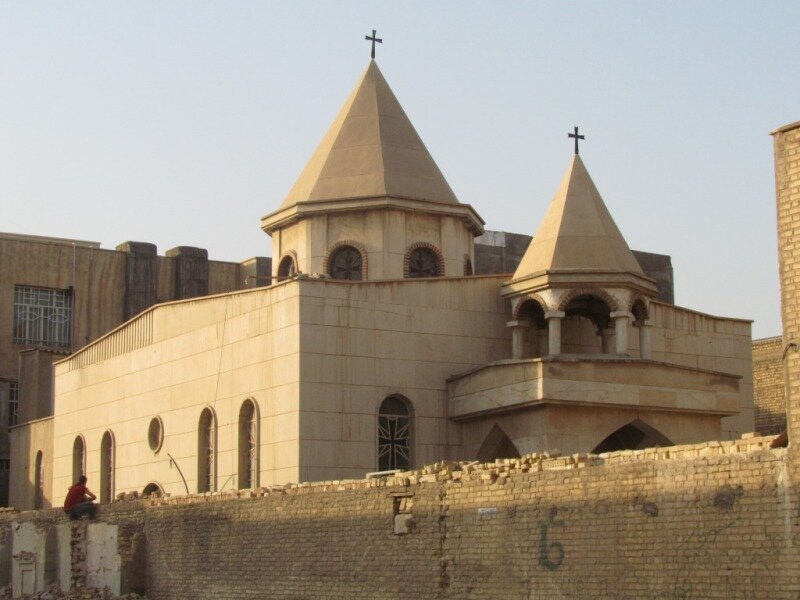Armenian churches in Abadan and Ahvaz seen as potential tourism attractions

TEHRAN - Armenian churches and cemeteries in the Iranian cities of Abadan and Ahvaz hold significant potential to boost cultural tourism, according to an Iranian lawmaker representing the Armenian community.
Geghard Mansooryan, the representative of Armenians of Isfahan and the south of Iran in the Iranian Parliament, recently visited Armenian religious and historical sites in both cities. He emphasized the important role these sites could play in enhancing the local tourism economy.
“Given the historical presence of Armenians in Abadan and Ahvaz, these cities are among the most prominent Armenian-populated areas in the country,” Mansooryan said. “There are two churches in each city, as well as Armenian cemeteries and properties, all of which have notable tourism potential.”
During his inspection tour, Mansooryan noted that Abadan’s church has already been restored, while the church in Ahvaz is in need of renovation, along with its adjacent cemeteries.
He stressed the importance of preparing these sites for visitors in a structured and respectful manner, saying, “The organization of the cemeteries must be improved to accommodate tourism. The local Armenian community is planning to further assess the tourism potential of these churches and cemeteries in the coming months.”
Mansooryan concluded by highlighting the need to consider all available heritage assets when planning tourism development, noting that making the best use of these underutilized sites could contribute meaningfully to funding and sustaining local tourism initiatives.
Located in the southwestern province of Khuzestan, the cities of Abadan and Ahvaz offer a compelling blend of history, culture, and industrial heritage, making them unique and lesser-known destinations for tourism in the ancient country.
Ahvaz, the provincial capital, sits on the banks of the Karun River and has long been a center of industry, culture, and ethnic diversity. The city is home to a mix of Persian, Arab, Lur, and Armenian communities, each contributing to its vibrant cultural tapestry. Ahvaz boasts several historical bridges, bustling traditional markets, and a dynamic riverfront atmosphere. Among its lesser-known yet significant cultural sites are Armenian churches and cemeteries, which reflect the long-standing presence of the Armenian community in the region. While some of these heritage sites are in need of restoration, they represent valuable assets for cultural and religious tourism.
Abadan, once one of the world’s most important oil refining centers, has a distinctive urban character shaped by its modern industrial history and multicultural population. The city is best known for its Abadan Refinery, a historic symbol of Iran’s oil industry. In recent years, attention has turned to preserving and showcasing Abadan's architectural and religious heritage, including the renovated Armenian church, which stands as a testament to the city’s diverse past. With a legacy of coexistence and strategic significance during both the oil boom and the Iran-Iraq War, Abadan is emerging as a site of interest for industrial heritage tourism, war tourism, and cultural exploration.
AM
